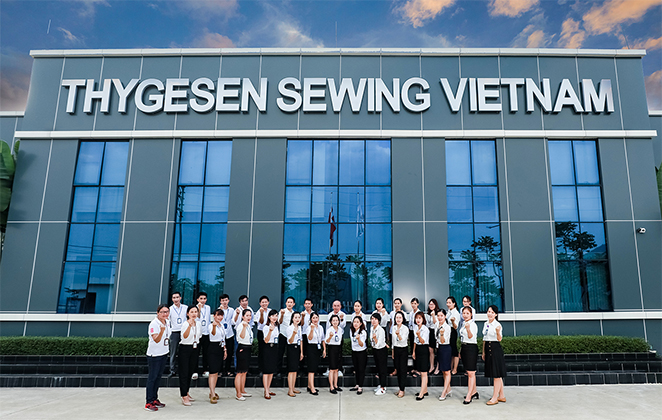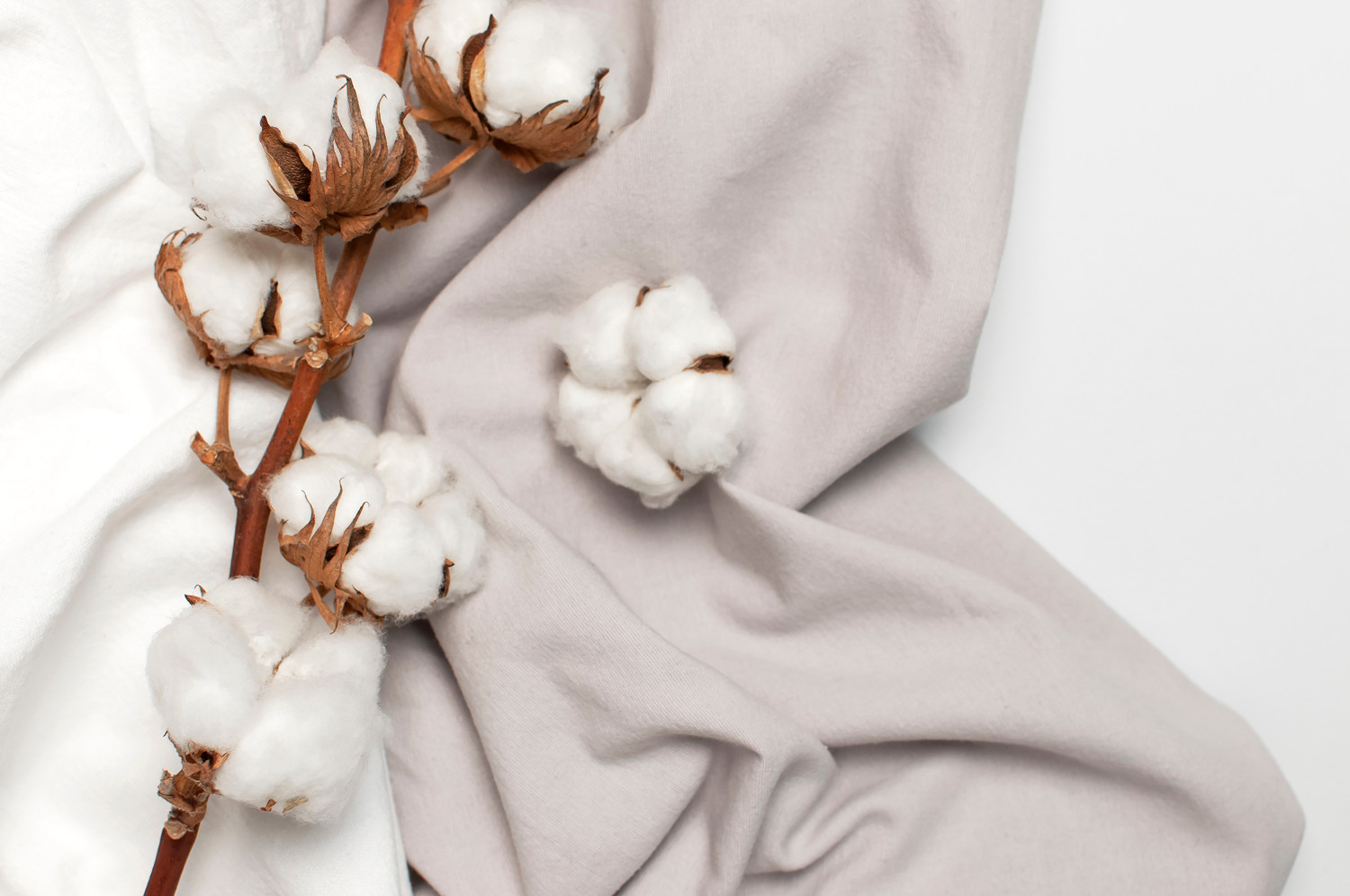Introduction
Cotton Fabric has been used for many years, but have you ever truly known about its definition as well as its beneficial impacts? Today, we will share what cotton fabric is and it’s four amazing, most commonly used types! Let’s get started!
What is Cotton Fabric

Cotton fabric is a type of natural cloth created out of cotton plant fibers.
Fabric made from cotton is one of the forms of fabric that is used the most frequently all over the world. This type of fabric is organic in terms of its chemical composition, which indicates that it does not contain any man-made substances. Therefore, a fabric made of cotton is produced from the fibers that surround the seeds of cotton plants. These fibers emerge from the seeds in the form of a spherical, fluffy structure once the seeds have reached maturity.
Because of its excellent breathability and low weight, fabrics made from cotton have been widely respected since the plant was first domesticated. This is due to the fact that cotton was the first plant to be domesticated. In spite of the truth that cotton is just as flexible as silk, it is more related to wool in terms of how well it retains heat.
Cotton lasts longer than silk but is more susceptible to damage from wear and tear when compared to wool. Cotton, despite this fact, continues to be an essential component in the textile industry all over the world. The natural color of this fabric is either white or a very light shade of yellow, and its tensile strength is far higher than the other textile types.
Different Types of Cotton Fabric

Throughout an interesting history, cotton has become an essential type of fabric in the textile market. It still remains till today with 16 different types. However, this article will only focus on the four most commonly used ones.
Pima Cotton
The most luxurious strain of cotton in four, features longer fibers, making it more durable than other types of cotton. This type of fabric is the one that is silky and exceedingly plush and can be created from Pima cotton. It generally has a long lifespan and does not easily fold or wrinkle. Pima Cotton fabric has a wide variety of applications beyond just underwear and sheets for the bed due to its amazing characteristics. So if you are looking for a garment suitable for your underwear or bed drape manufacturer, Pima Cotton is an excellent choice!
Egyptian Cotton
The straightness and durability of Egyptian cotton fibers are because they are hand-picked, not normally mechanically harvested. Therefore, Egyptian Cotton is able to lengthen these fibers in order to generate very fine threads. This allows the production of yarns to be manufactured without compromising the length. This is a distinct advantage compared to regular cotton, which is more spliced.
Pure Egyptian cotton is softer and more flexible since its threads can be woven into each. square inch to obtain a finer and more consistent finish, making the fabric as a whole. Also, the fibers are much stronger and less likely to break under pressure because they were not collected by machinery. Well, with its special characteristics, please remember to remind your customers to wash it by hand.
Upland Cotton
Cotton produced from short staple fibers is an excellent choice for use in applications that involve frequent washing and general use. The most common one manufactured by short staple fibers is upland cotton, also known as the most common type of cotton with short staples. Denim pants and flannel are frequently made from Upland because of their suppleness, strength, and low maintenance requirements. Upland is a true American staple, accounting for 95% of all domestic cotton output and has been used for a very long time. Finding a perfect type of garment for Denim designs? Upland Cotton might be on your top-listed!
Organic Cotton
Organic cotton is a textile type grown using methods that are not harmful to the environment and are more natural. Organic farming practices not only reduce the use of potentially dangerous and long-lasting fertilizers and pesticides but also encourage a food chain that is more ecologically diverse. Soil fertility is both restored and maintained via the use of organic farming methods.
Organic cotton is also produced without synthetic fertilizers and pesticides, in contrast to conventional cotton, which is grown with these chemicals. To add salt to injury, using genetically modified organism (GMO) seed is illegal under federal law in organic farming.
Characteristics of Cotton Fabric

So what makes cotton fabric different from other types of fabric? Cotton fabric is not only known for its softness, and durability but also its amazing breathability and the ability of holding dyes as well. Let’s find out each of its benefits, shall we?
Softness,
The Cotton Fabric is born to be soft and fluffy, making you become comfortable whenever you use it. What makes the cotton fabric so soft like this is its processing procedure and its qualities. For your information, cotton can have a rough, canvas-like texture of the canvas or a soft, flannel-like feel of flannel, depending on how it is processed. The texture of this amazing type of fiber is determined by the finishing.
Durability
Another fantastic characteristic of cotton fabric is its durability. Cotton has a high tensile strength, which means it will not tear as quickly as other textiles and will last for a significant amount of time. It gains 30 percent of its strength when wet and can withstand being washed repeatedly in extremely hot water.
Breathability
Due to its absorbent nature, cotton is able to pull sweat away from the skin and promote airflow while you wear it. In this way, a completely natural system is established for rapid heat dissipation. Great for the warmer months, it’s like wearing an air conditioner built into your clothing.
Holds dye well
Because cotton fabric can absorb approximately 25 times its weight in water, it is one of the most common fabrics used in tie-dyeing. Because they quickly absorb and evacuate moisture, the fibers have been referred to as being able to hold dye well.
What are the common uses of cotton?

Cotton’s durability and absorbency make it a versatile material for a variety of products, including apparel, home decor, and industrial items such as tarps, tents, hotel bedding, army uniforms, and even astronaut clothing. Cotton is the fiber of choice for weaving or knitting in a wide range of textiles, from velvet to corduroy to chambray to velour to jersey to flannel.
Cotton can be blended with other natural fibers, such as wool or synthetic fibers, such as polyester to create dozens of different fabric types with a wide range of applications. Here are some amazing uses of cotton that you can be seen:
- Denim
- Underwear
- Bed sheets
- Shirts
- T-shirts
- Nappies
- Socks and so on.
Conclusion
As we have introduced, cotton fabric is famous for its durability, breathability, and softness, making it an amazing choice for your clothing manufacturer! In this article, we have shared with you four types of textiles and each of their advantages! We hope that with our help today, you will be able to find the most suitable type of cotton fabric for your manufacturer!


